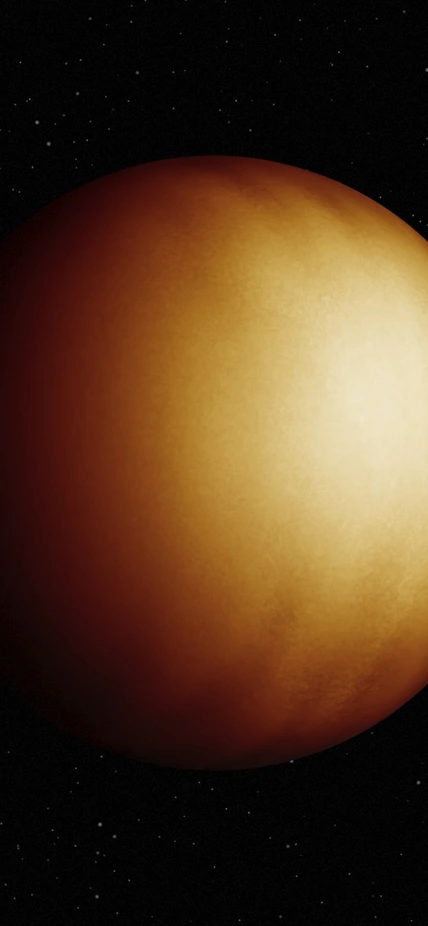Washington, DC— JWST has identified water vapor in the atmosphere of the exoplanet WASP-18b according to new work published in Nature. This is the third major discovery announced by the revolutionary space telescope’s Transiting Exoplanet Community Early Release Science Team, of which five Carnegie astronomers are members, including Anjali Piette, who played a key role in this latest discovery, and co-author Munazza Alam.
WASP-18 b is an ultra-hot gas giant planet 10-times more massive than Jupiter, which orbits a star slightly larger than our Sun in just 23 hours. First discovered in 2009, astronomers have used multiple ground- and space-based telescopes to probe its mysteries.
Proximity, both to its star and to us, helped make WASP-18 b such an intriguing target for scientists, as did its large mass. WASP-18 b is one of the most massive worlds whose atmospheres we can investigate, and it can help astronomers understand how such planets form and come to be where they are.
The researchers’ data clearly showed multiple small but precisely measured water features at various elevations in the atmosphere, despite the planet’s extreme temperatures of almost 5,000 degrees Fahrenheit (2,700 Celsius). It’s so hot that it would tear most water molecules apart, so still seeing its presence speaks to JWST’s extraordinary sensitivity to detect remaining water.
‘‘Because the water features in this spectrum are so subtle, they were difficult to identify in previous observations. That made it really exciting to finally see water features with these JWST observations!’’ said Piette.
Added lead author Louis-Philippe Coulombe of the University of Montreal: ‘‘Using such measurements, we will be able to detect such molecules for a wide range of planets in the years to come!’’
The early release team was able to make a temperature map of WASP-18 b as it slipped behind and reappeared from its star—a phenomenon known as a secondary eclipse.
The same side, known as the dayside, of WASP-18 b always faces the star, just as the same side of the Moon always faces Earth. The temperature, or brightness, map shows a huge change in temperature—up to 1,000 degrees—from the hottest point facing the star to the so-called terminator, where day and night sides of the tidally-locked planet meet in permanent twilight.
The team mapped temperature gradients across the day side of the planet. Given how much cooler the planet is at the terminator, there is likely something hindering winds from efficiently redistributing heat to the night side. But what is hindering the winds is still a mystery.
One interpretation of the eclipse map is that magnetic effects force the winds to blow from the planet’s equator up over the North pole and down over the South pole, instead of East-West, as we would otherwise expect.

Researchers recorded temperature changes at different elevations of the gas giant planet’s layers of atmosphere. They saw temperatures increase with elevation, varying by hundreds of degrees.
Earlier this month, Piette was part of a team of astronomers, also including Carnegie’s Peter Gao, who used temperature mapping to improve our understanding of the atmosphere of another often-studied exoplanet, Gliese 1214 b.
More than 100 scientists around the globe are participating in the Transiting Exoplanet Community Early Release Science Program led by Natalie Batalha, an astronomer at the University of California Santa Cruz, who helped coordinate the new research. Much of this groundbreaking work is being done by early career scientists like Piette and Alam.
“The ERS collaboration has put a lot of thought into the ways in which we can, and should, recognize the contributions of team members—from observational design, data analysis and interpretation, and paper writing—with a mindset centered on elevating the contributions of early career scientists,” Alam concluded.
These findings also represent just one of several JWST science and instrumentation teams involving Carnegie scientists. Carnegie and Carnegie-affiliated astronomers are leading six projects in JWST’s first cycle of the telescope’s allocations and four projects in the second cycle.
